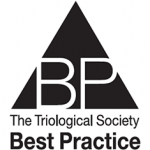 TRIO Best Practice articles are brief, structured reviews designed to provide the busy clinician with a handy outline and reference for day-to-day clinical decision making. The ENTtoday summaries below include the Background and Best Practice sections of the original article. To view the complete Laryngoscope articles free of charge, visit Laryngoscope.com.
TRIO Best Practice articles are brief, structured reviews designed to provide the busy clinician with a handy outline and reference for day-to-day clinical decision making. The ENTtoday summaries below include the Background and Best Practice sections of the original article. To view the complete Laryngoscope articles free of charge, visit Laryngoscope.com.
Background
Lateral dural venous sinus thrombosis (LST) represents a serious complication of acute or chronic otitis media. It is thought to develop from the progression of inflammation and granulation tissue formation in the perisinus bone to infection of the sinus wall proper, with incitement of mural thrombosis. Treatment of LST typically includes the administration of broad-spectrum parenteral antibiotics and surgical decompression of the middle ear and/or mastoid. The safety and efficacy of anticoagulation in the management of LST remains controversial. Proponents of anticoagulation argue that this treatment enhances the resolution of symptoms, helps reestablish sinus patency, and reduces intracranial pressure in cases of otitic hydrocephalus. However, others argue that anticoagulation carries serious risks without definitive benefit.
This best practice review addresses three interrelated issues of anticoagulation for LST:
- is anticoagulation safe in patients with LST;
- does anticoagulation impact the likelihood of dural venous sinus recanalization; and
- does anticoagulation impact the likelihood of long-term symptom resolution.
Best Practice
The use of therapeutic anticoagulation in the treatment of LST remains controversial. The evidence reviewed indicates that, although risks of bleeding complications exist, anticoagulation can be safely administered. However, there is not sufficient evidence to demonstrate benefit in either thrombus resolution or long-term neurological symptom resolution to warrant a general recommendation. (Laryngoscope. 2016;126:1027–1028).